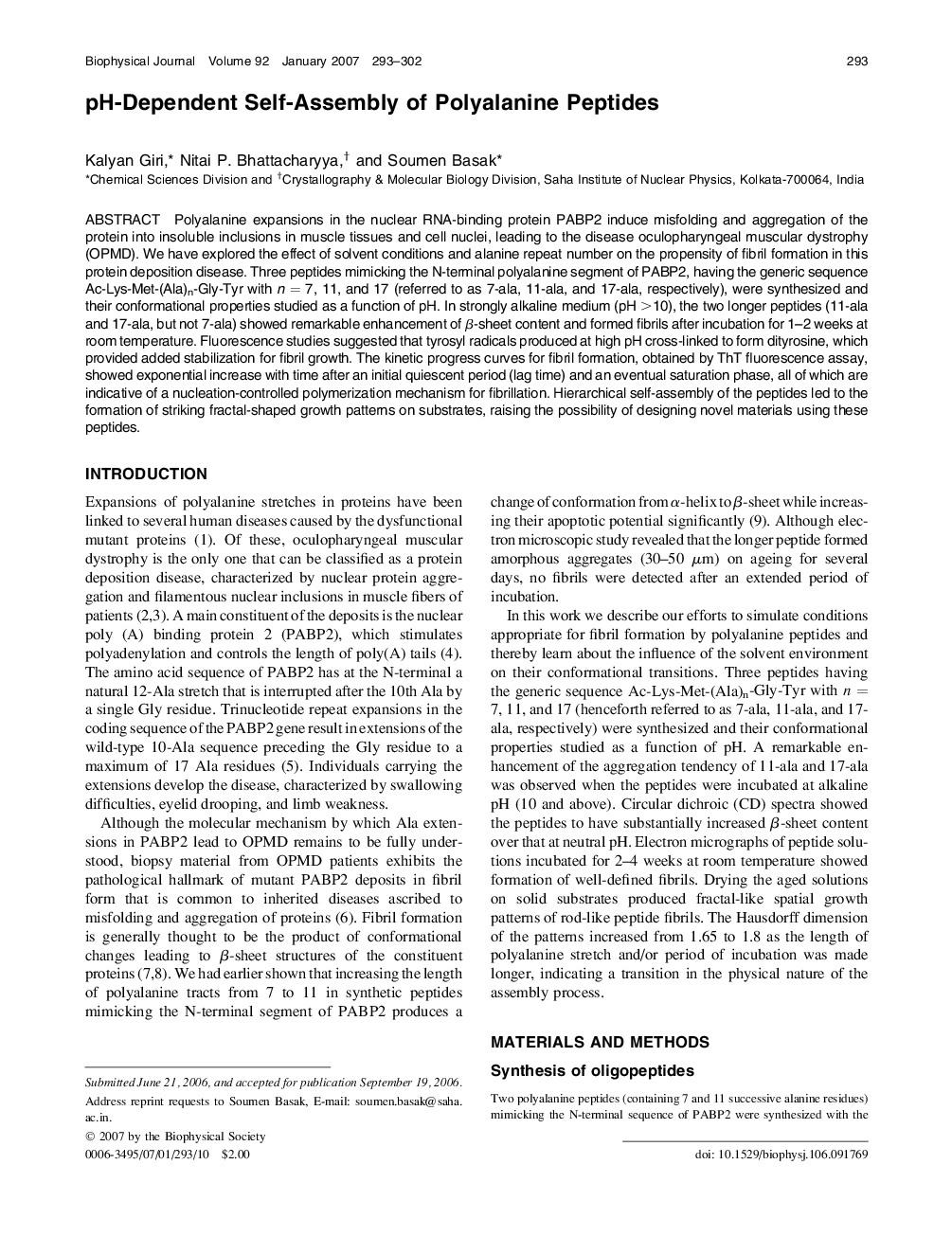| کد مقاله | کد نشریه | سال انتشار | مقاله انگلیسی | نسخه تمام متن |
|---|---|---|---|---|
| 1958267 | 1057905 | 2007 | 10 صفحه PDF | دانلود رایگان |

Polyalanine expansions in the nuclear RNA-binding protein PABP2 induce misfolding and aggregation of the protein into insoluble inclusions in muscle tissues and cell nuclei, leading to the disease oculopharyngeal muscular dystrophy (OPMD). We have explored the effect of solvent conditions and alanine repeat number on the propensity of fibril formation in this protein deposition disease. Three peptides mimicking the N-terminal polyalanine segment of PABP2, having the generic sequence Ac-Lys-Met-(Ala)n-Gly-Tyr with n = 7, 11, and 17 (referred to as 7-ala, 11-ala, and 17-ala, respectively), were synthesized and their conformational properties studied as a function of pH. In strongly alkaline medium (pH >10), the two longer peptides (11-ala and 17-ala, but not 7-ala) showed remarkable enhancement of β-sheet content and formed fibrils after incubation for 1–2 weeks at room temperature. Fluorescence studies suggested that tyrosyl radicals produced at high pH cross-linked to form dityrosine, which provided added stabilization for fibril growth. The kinetic progress curves for fibril formation, obtained by ThT fluorescence assay, showed exponential increase with time after an initial quiescent period (lag time) and an eventual saturation phase, all of which are indicative of a nucleation-controlled polymerization mechanism for fibrillation. Hierarchical self-assembly of the peptides led to the formation of striking fractal-shaped growth patterns on substrates, raising the possibility of designing novel materials using these peptides.
Journal: - Volume 92, Issue 1, 1 January 2007, Pages 293–302